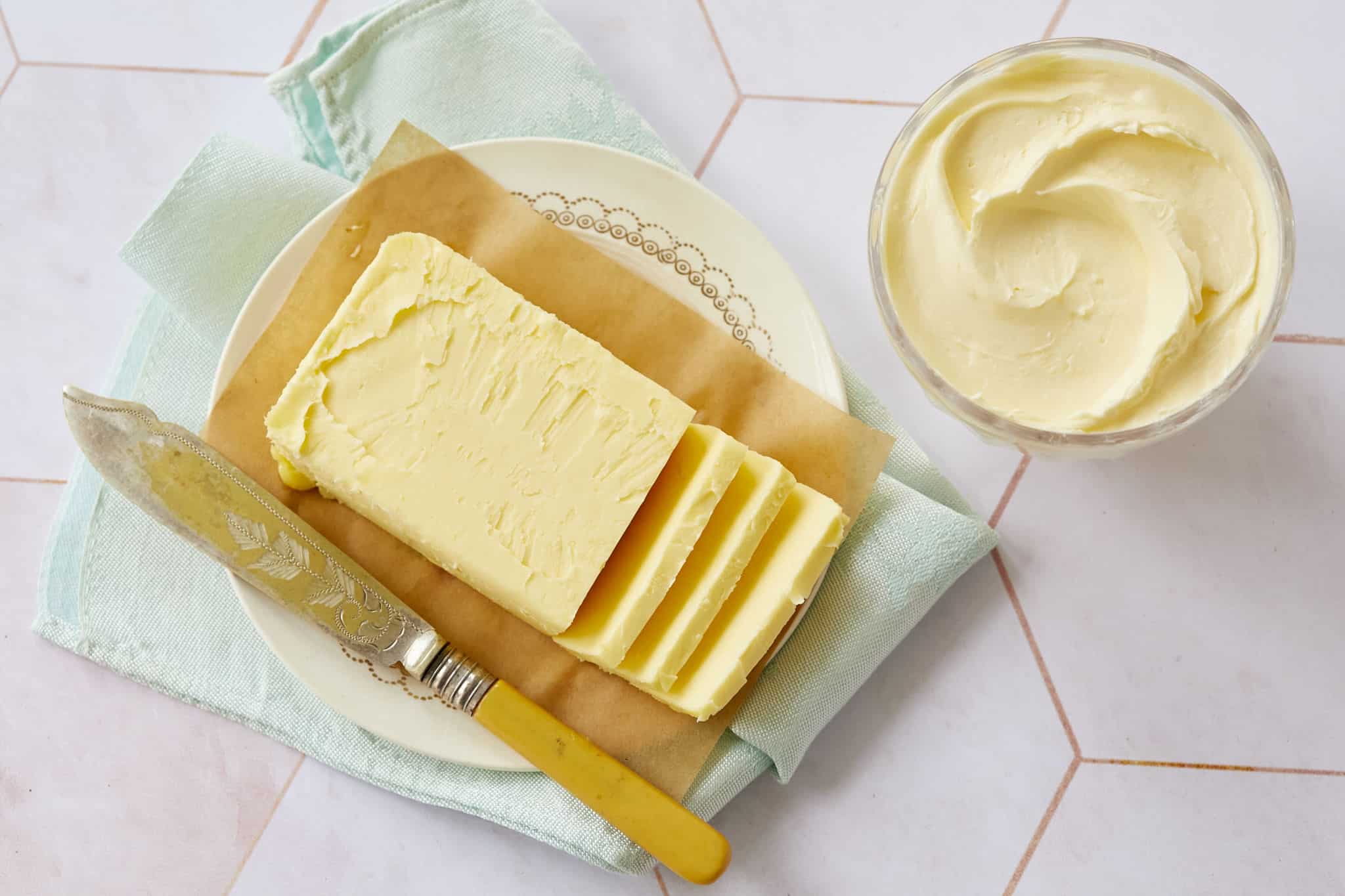
This post may contain affiliate links. Please see my full disclosure for details.
Hi Bold Bakers!
IN THIS ARTICLE: You’ll get a clear and concise breakdown of the pros and cons of baking with Margarine Vs. Butter, and hopefully the answer to the age-old debate you’ve been looking for — which is better?
The Margarine vs. Butter debate has been argued for decades. Both margarine and butter are fats used in baked goods to add flavor, richness, and structure, among other things. They’re both available in sticks or spreads and can be used in baking or cooking in the same way in equal amounts.
I’m going to approach this from two different angles — the health perspective and the quality of the desserts each yield — and we’ll discuss the basics of Margarine vs. Butter in baking to help you decide which to use for your baked goods.
Disclaimer: This blog does not provide medical advice. This blog post is meant to provide general information and open a discussion surrounding health and food. The following information, and any link to other websites, should not be considered medical advice. If you or another person has a medical concern, please contact your health care provider or seek other professional medical treatment.
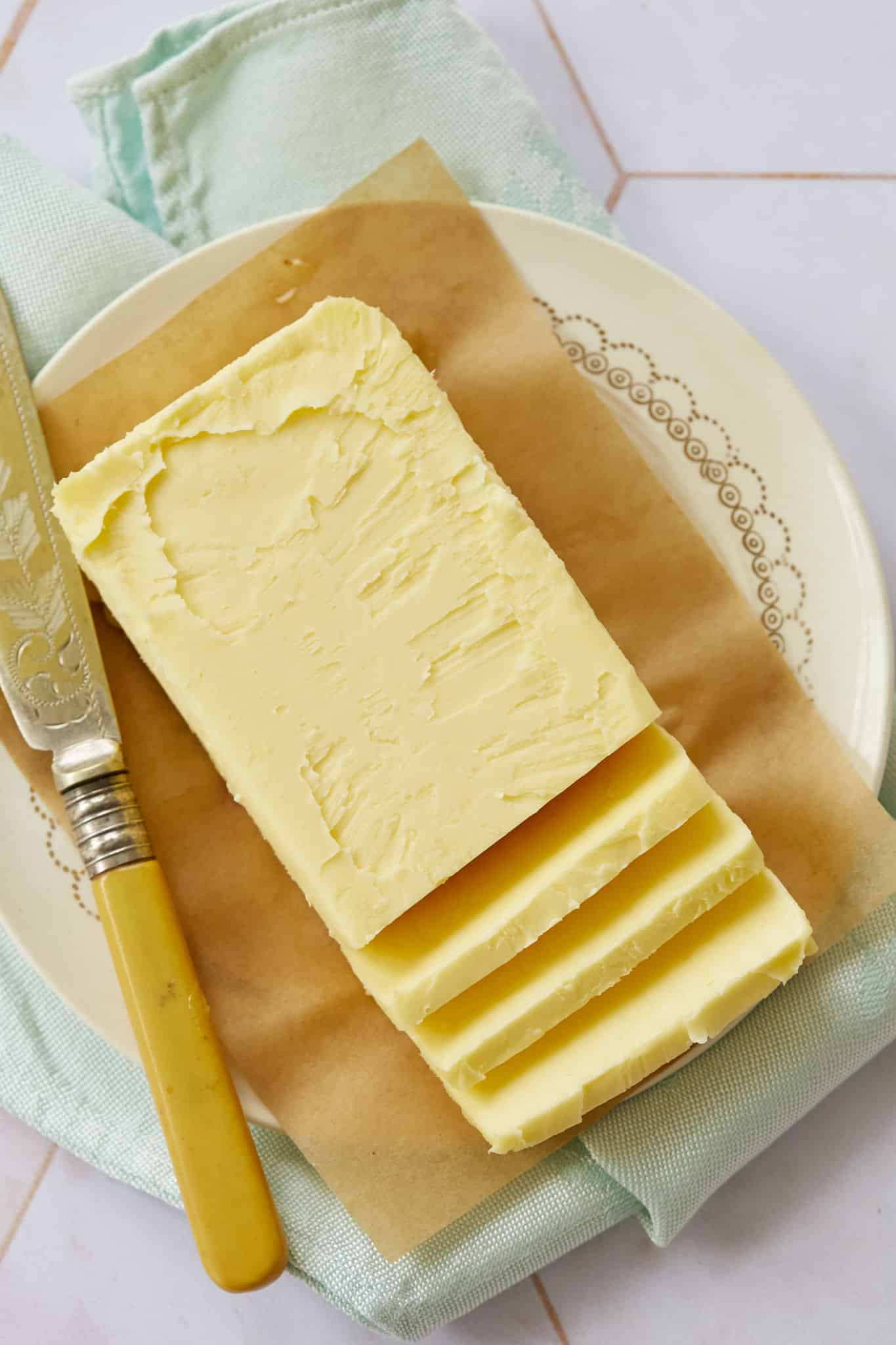
How Is Butter Made?
Butter is made from heavy cream, the fatty part of cow’s milk that is usually removed or partially removed when sold. It is churned, making the rich, spreadable butter that we’re used to. Since it comes from animals, it is high in saturated — or “bad” — fats. It is rich and delicious and makes baked goods taste great.
What Is Margarine, And How Has It Evolved?
Is margarine bad for you? Let’s get this out of the way: margarine has gotten a bad reputation in the past for being full of harmful chemicals, but the margarine industry has made some major improvements in the past few years. Most kinds of margarine used to be made with trans fat — a predominantly man-made type of fat that has proven to vastly increase one’s risk of heart disease, even in small amounts.
In 2018, the FDA banned trans fats, forcing margarine manufacturers to reformulate using fully hydrogenated oils, which are much better for you. Trans fats can be found on nutrition labels as “partially hydrogenated oils.”
So, what is modern margarine? It is:
- Vegetable fats (such as vegetable oil)
- Water
- Thickening agents
Since vegetable fat is unsaturated fat, it’s also known as “good” fat. On top of that, since it’s plant-based, most margarine is dairy-free and vegan.
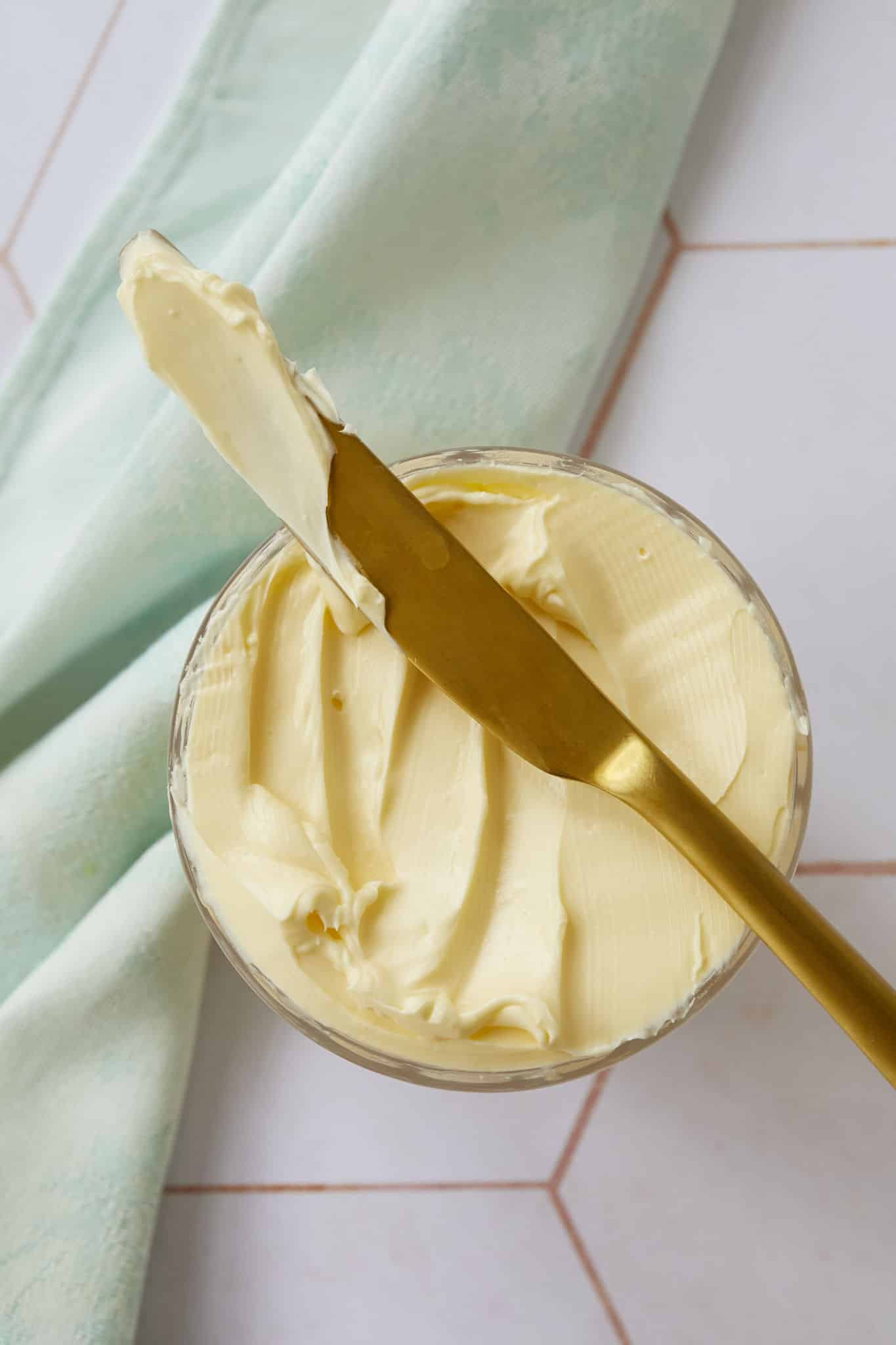
Margarine vs. Butter: The Health Benefits
First, I wouldn’t say I like using terms like “more healthy,” because that can mean different things to different people. It can mean natural, low-calorie, heart-healthy, vegan, etc., which all have very different definitions and can have minimal overlap.
That being said, let’s go through a bunch of pros and cons of each.
Butter Pros & Cons
- PRO: Butter is less processed than margarine.
- PRO: Butter from grass-fed cows contains nutrients such as vitamin A, Omega-3 fatty acids, butyrate, and conjugated linoleic acid.
- CON: Butter can raise one’s levels of LDL (bad) cholesterol which can lead to heart attacks, strokes, and more.
- CON: Butter is high in calories.
Margarine Pros & Cons
- PRO: Margarine can reduce one’s levels of LDL cholesterol which can reduce the risk of heart attacks, strokes, and more.
- PRO: Most margarine is dairy-free and vegan
- PRO: Margarine is better for your heart than butter, according to the Mayo Clinic.
- CON: Margarine is high in calories and is usually more processed than butter.
Butter and margarine have roughly the same calories and grams of fat, with around 100 calories and 11-12 grams of fat per tablespoon. They make light versions of both butter and margarine that tend to have fewer calories and less fat.
So which one is healthier? That’s up to you! Neither of these are great for you, so they should both be consumed in moderation (everything in moderation, even moderation, as I always say), just like any treat.
If you value natural, unprocessed foods, maybe butter is better for you. If you have or are at high risk for heart disease, atherosclerosis, or other similar diseases, maybe you should use margarine. You should always consult your doctor first and decide which option is best for you.
Margarine vs. Butter: Which Is Better For Baking?
Margarine and butter can be used interchangeably in baking. Just make sure if a recipe calls for sticks of butter, you use sticks of margarine instead of the spreadable tub or the other way around. This is because the tub and the sticks have different textures that will alter the texture of your baked goods.
Things To Consider When Baking With Margarine And Butter
When it comes to taste, baked goods made with butter have much more flavor than baked goods made with margarine.
Margarine also has a much higher water content than butter which yields a softer-textured result, while butter yields chewier results. Cookies baked with margarine have a softer, doughier texture, while cookies baked with butter are crispier on the outside and gooey on the inside.
So, based on these facts, I prefer baking with butter over margarine.

Food Budget
It’s really up to your personal preference which to use, but margarine is typically much less expensive than butter, so it may be easier to fit margarine into your budget.
At the end of the day, both are good options for your baking, depending on your needs.
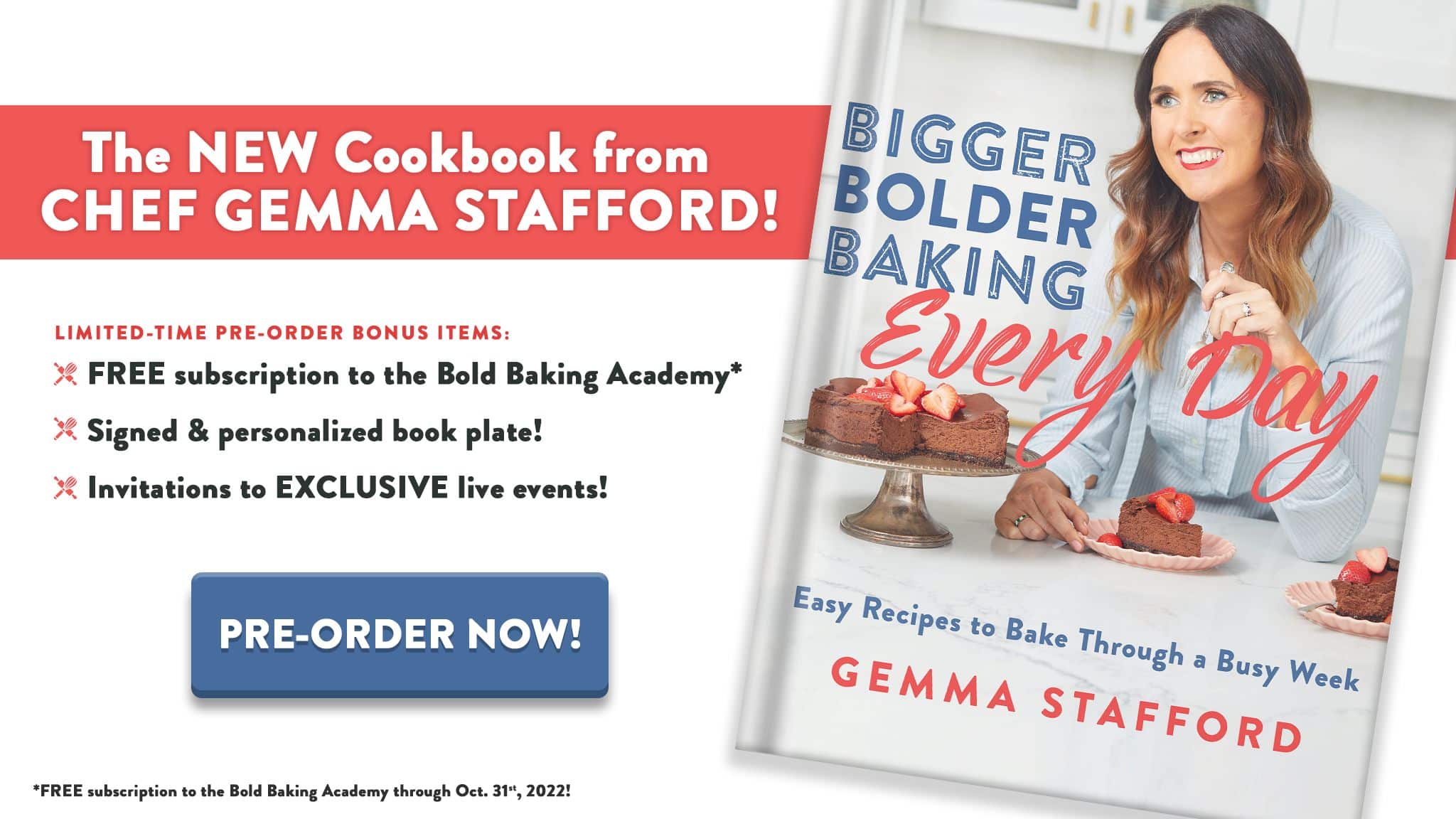


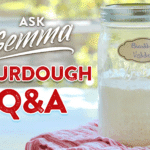

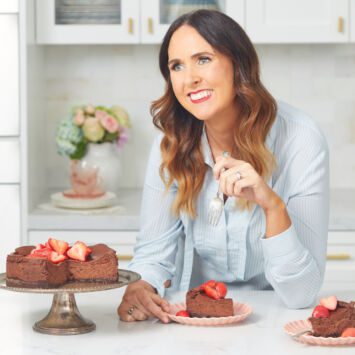


Hi Gemma,
I would love to know more about crisco. I’ve used it in the past but honestly I have no idea what it’s actually made from. I quit using it years ago when I heard it’s not a solid or a liquid, that it’s partially hydrogenated and that chemical process is something to stay away from. My mother and father both used it . Do you have any knowledge about this product?
Would Olive Oil be better to use than butter or margarine?
I have been trying to find a way to explain this on my own blog to my readers and this post really helped me in so many ways, writing and learning. Thank you so much for another great help article Gemma
I use crisco sometimes I’m place of butter it makes baked goods crispy too or gives them a crunch
I like to add 1/3 margarine 2/3 butter to my baking. What are your thoughts on this Gemma ?